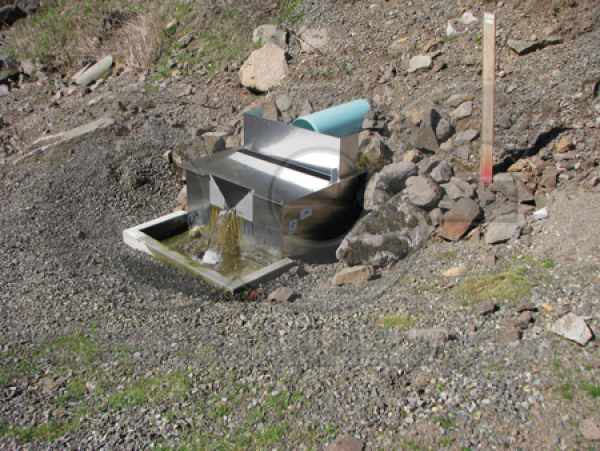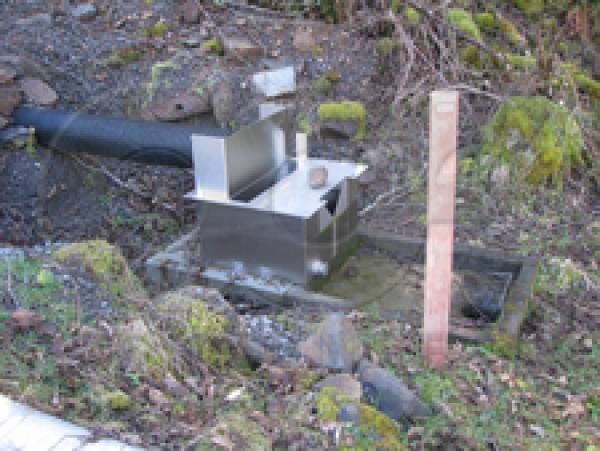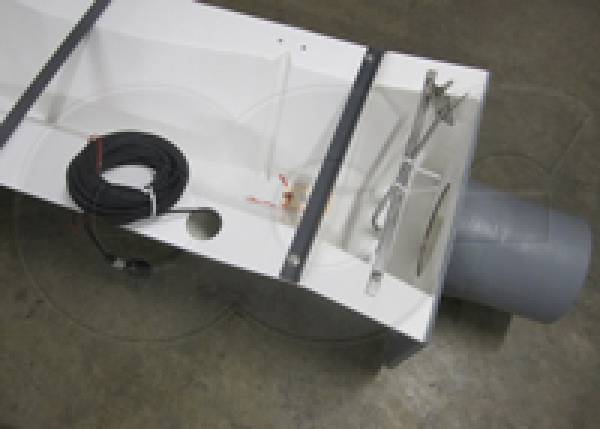This website uses a variety of cookies, which you consent to if you continue to use this site. You can read our Privacy Policy for
details about how these cookies are used, and to grant or withdraw your consent for certain types of cookies.
How Does a Weir Box Work
At its simplest, a weir box is a fabricated channel into which a weir plate has been installed.
The body of the weir box serves as the upstream weir pool through which water flows prior to spilling over the weir plate. In the weir pool, flow conditioners (under / over flow baffles, flow tranquilizers, and energy absorbers) can be installed to slow, straighten, normalize, or otherwise condition the flow so that the measurement accuracy is maximized.
Weir Box Sizing
The weir pool (and thus overall weir box) sizing should be in conformance with ISO 1438:2008 for crest height above the weir pool / box floor and the distance on either side of the weir notch to the weir pool / box sides. While the point of measurement should be 3-5 Hmax upstream of the weir plate per ISO 1438:2008, the overall length of the weir pool can be shortened though the use of baffles and other flow conditioners.

Flow Conditioning
As a standard, Openchannelflow weir boxes are provided with an underflow baffle just after the inlet to the box to normalize the flow across the weir pool and create a more uniform velocity profile. Poor velocity distribution and insufficient weir pool size are the two most common problems with weir boxes.
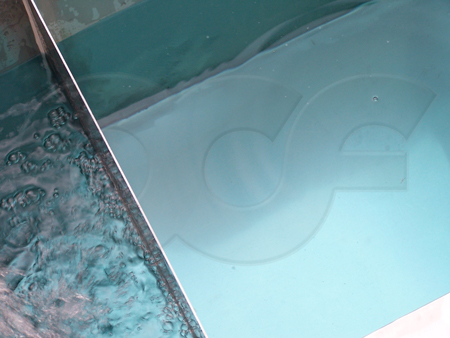
Weir Plate Mounting
In the weir box, or at its end for free-spilling discharges, a weir plate is mounted to a bulkhead. The weir plate – usually constructed of stainless steel – is set perpendicular to the direction of flow through the weir box and level vertically and from side-to-side. Plates that are not perpendicular to the direction of flow or which are not level have an effective crest length that is longer than the flow equations allow, which will result in the installation under-reading the actual flow rates.
Weir plates commonly have v-shaped, trapezoid, or rectangle notches, although compound and proportional notches are occasionally used. The notch size and geometry will dictate the size of the weir box as well as the flow rates that can be accurately measured. In general, V-shaped notches have the best low end flow rates and flow resolution, while rectangular notches have the highest maximum flow rates
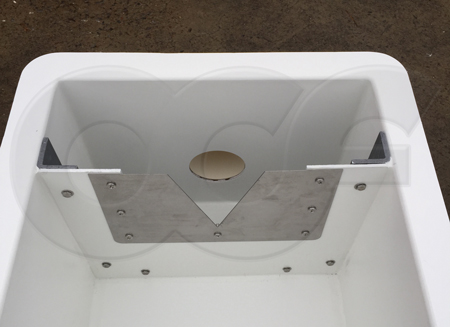
All fiberglass, and some galvanized / stainless steel, weir box by Openchannelflow have weir plates that are bolted on to a bulkhead. Bolted construction allows the weir plate to be removed and replace as necessary. Should the plate become damaged, it can be replaced. Or if the flow rates changed, a new, different weir plate may be added (so long as the weir pool / box is of sufficient size).
Entering / Exiting Flow
Flow can enter a weir box in one of two ways: pipe connection or free-spilling. Pipe connections can be horizontal or vertical into the weir box. Horizontal inlet piping is provided with an underflow baffle, while vertical inlet piping is provided with an overflow (or combination overflow / underflow) baffle.

When flow spills into the inlet of a weir box, an underflow baffle is provided. Depending upon how far the flow falls into the weir box, how energetic the flow is, or if foaming may be present, a splash guard may also be necessary.

After the flow has gone over the crest of the weir plate, it can freely spill off the end of the weir box, or it can be directed out through a pipe connection (horizontally or vertically).

Related Blog Posts
Explore more insights in our blog.

LOCATIONS IN ATLANTA, GA & BOISE, ID


